I find myself sort of painted into a corner these days. Because of my profession, I am expected to be “on” at all hours of the day, and ready to opine on the latest pestilence from Washington to satisfy our nation of news junkies at a moment’s notice. To my great surprise, I have learned that for those who know me exclusively as a journalist, it is utterly unacceptable for me to have any hobbies or interests outside my established domain.
And apparently, that goes for both sides! In fact, it may even be stronger for the legions who disagree with me. As an example, I mentioned on my Twitter recently that I like castles, and proceeded to list my favorite castles in order. A seemingly innocuous bit of trivia. Some of the responses I received were nothing less than astonishing. One person said, and I quote, “This is a joke right???? Your peddling nothing but conspiracies and you want to talk about your favorite castle.”
Another condemned me for describing Carcassonne Castle… as a “castle”… calling me a “fucking dickhead.”
These people obviously feel strongly about… something. Castles? I guess that’s what I get for thinking I could just go on the internet and talk about my enjoyment of something as benign as medieval architecture.
You’d think my critics would be happy I was off the subject of politics!
Well, I make no apologies. I have hobbies outside of work, and truth be told, I don’t even like discussing politics. It is a base and vile subject, the province of base and vile people, and when I’m not pointing out their villainy, I want nothing to do with it, or them.
Ergo, this is my website, and if you tuned in for politics, well there is the door. Oddly enough, I wrote this introduction last, and so disclaimer: this is going to be a multipart blog series. Because apparently, I have a lot to say about castles. Now then. For the post proper. *Ahem*
I like castles.
This shouldn’t controversial. I’ve always liked castles. They’re really neat. This isn’t a revolutionary idea or concept, I just really like them. They’re big and old and mysterious, and used to be full of knights and squires and young pages dreaming of riding off into battle one day on a gallant charger of their own, clad in the silver armor they spent their hours cleaning and caring for. As I’ve mentioned before, I grew up on the tales of King Arthur and his knights of the round table, so it probably shouldn’t be any surprise I have a fondness for Camelot and other fortresses.
Castles are hopelessly romantic, and pull the heart back to a time when there was nobility, and chivalry, and a fervent belief in God and king and country. That, and incurable dysentery, plague, and incessant invasions that ravaged your home and countryside.
Gotta take the good with the bad, I guess.
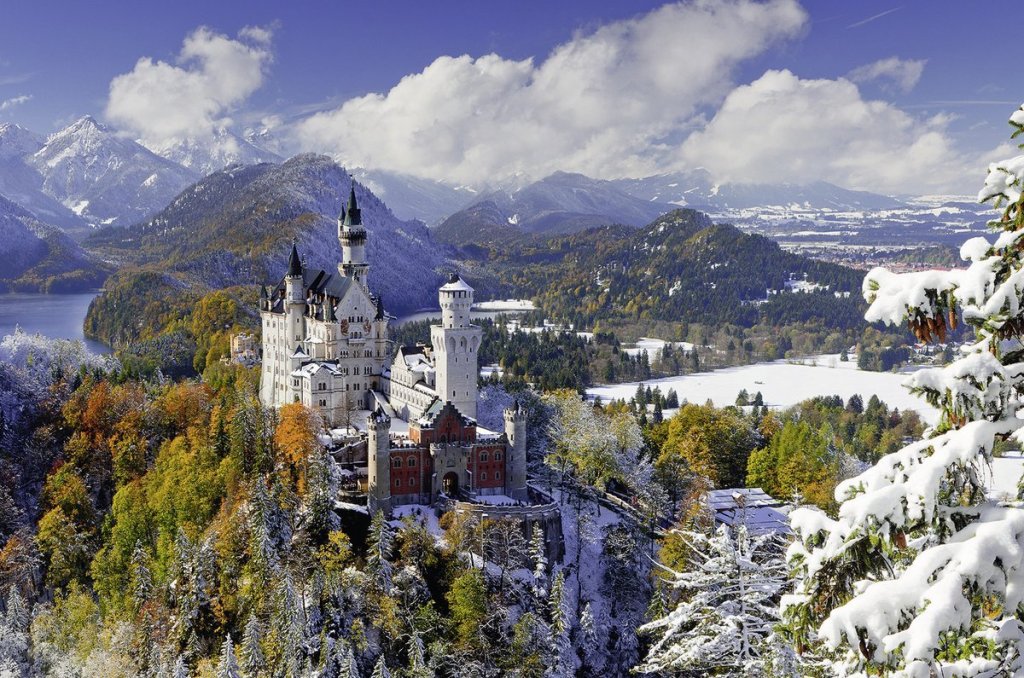
But come on, I mean look at that. Just look at it! We just don’t build like that anymore. It’s so picturesque, sitting there in the Bavarian mountains like a vision from a fairy tale. It really is inspiring, there’s something that captures the imagination and just makes you believe in magic.
Of course, castles were ruinously expensive to build and maintain. That one there nearly bankrupted a monarchy, and infuriated the country’s nobility to the point they hatched a conspiracy against the king, and then killed him!
Well, probably. Maybe.
He died under very mysterious circumstances, and that’s what most people believe happened. The most tragic part is they killed him before the castle was finished. Want to know more? Read on.
And still, looking at it now, I think it was well worth the trouble.
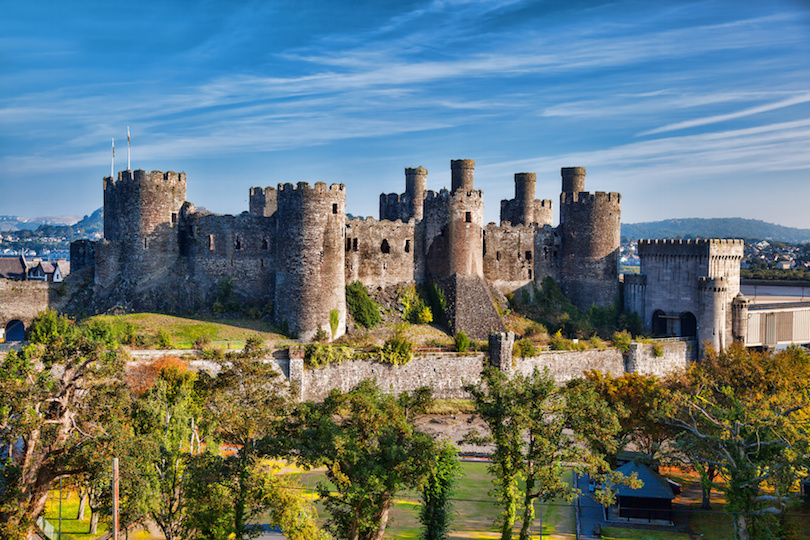
Castles were more than just gaudy palaces for mad kings, however. They served the practical purpose of offering (hopefully) impregnable defenses against invading forces. Of course the king usually lived there, along with his closest subjects and oftentimes other members of the royal family. Plus, if you got really fancy, there would be a “curtain wall” built out around the main castle, and inside there would be a lot of houses and shops and maybe even some fields for farmers. This would help defend the peasants who worked to keep the castle running.
The most interesting part of castles for me, however, is how they reflect the regional architecture. After studying castles for years, I have a game that I play against myself whenever I see one, where I try to guess the location and period in which a given castle was built. I’m right about 75-percent of the time, and it’s always a little thrill when I guess correctly, supremely nerdy as it may be.

Because that’s the thing: castles are the embodiment of the cultures and times that created them. It is very easy to distinguish a Welsh castle from a French one, or one in Germany, or even Poland, or Russia. The architecture is a dead giveaway, and it’s fun to find the language of the people who built them crafted into their walls and parapets. The brooding, somber ramparts of a Teutonic fortress, or the stoic, rounded inner bailey of a British castle; or even the arched, playful red merlons of Italian battlements, like the one above.
They all speak to the souls of the peoples and cultures who created them. You may not think it, but the architecture of a civilization goes a long way into telling you what kind of people they are. Proud, bold, artistic, fanciful, imaginative, militaristic, pragmatic, fearsome, imperious, whimsical…
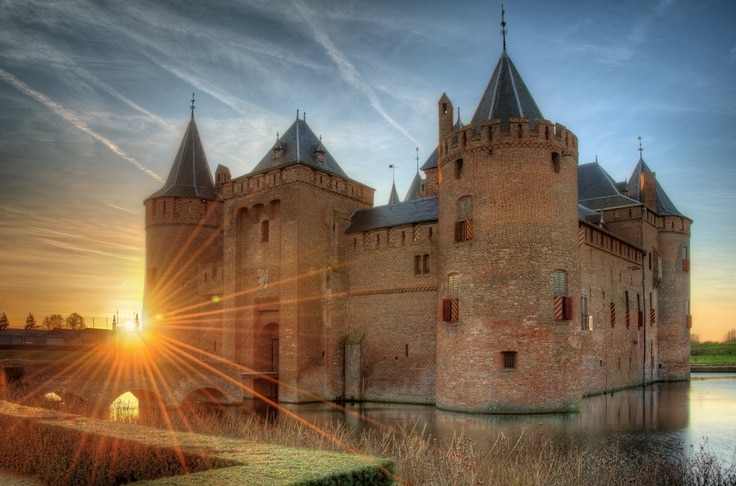
Architecture today is all a bland sameness that says nothing about our cultures except that we have no imagination whatsoever. Romantic that I am, I yearn for the days when a country poured its pride into its buildings: they were defensive, yes, but they were also art. You can’t look at Muiderslot castle above and not see the artistic flare in the gracefully curving turrets and well-proportioned red stone walls. There’s passion there. They were proud to build that castle, military fortification that it was. Muiderslot was as much a status symbol, sitting imposingly in its impressive moat, as it was a practical structure. It told the Dutch peasants passing by that their lord was powerful, and by extension, so were the Dutch people. There was majesty! There was grandeur.
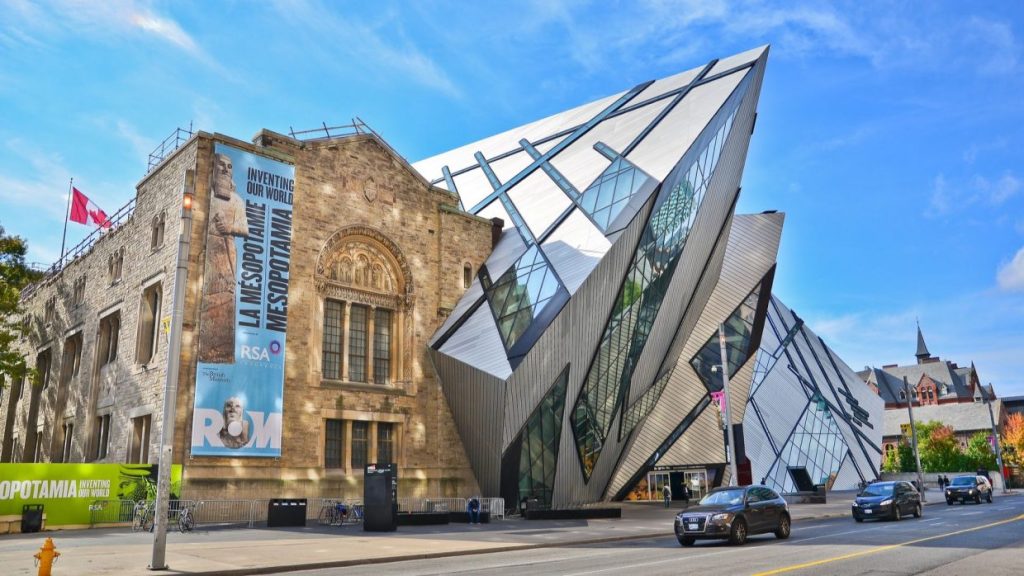
That’s a lesson we’ve forgotten today, lost in our uninspired, ubiquitous glass and steel monstrosities that swallow up more and more city skylines with each passing year. Gone are the Chrysler buildings. Gone are the Neuschwansteins. Replaced instead by cancerous eyesores like the one erupting from the Royal Ontario Museum above–symbolically consuming the grand traditions that came before.
Here, then, is a look back at the days of yore, to my favorite castles. I know no one asked, but this is my website, and I want to talk about castles, damnit, and I never get to do that anywhere else.
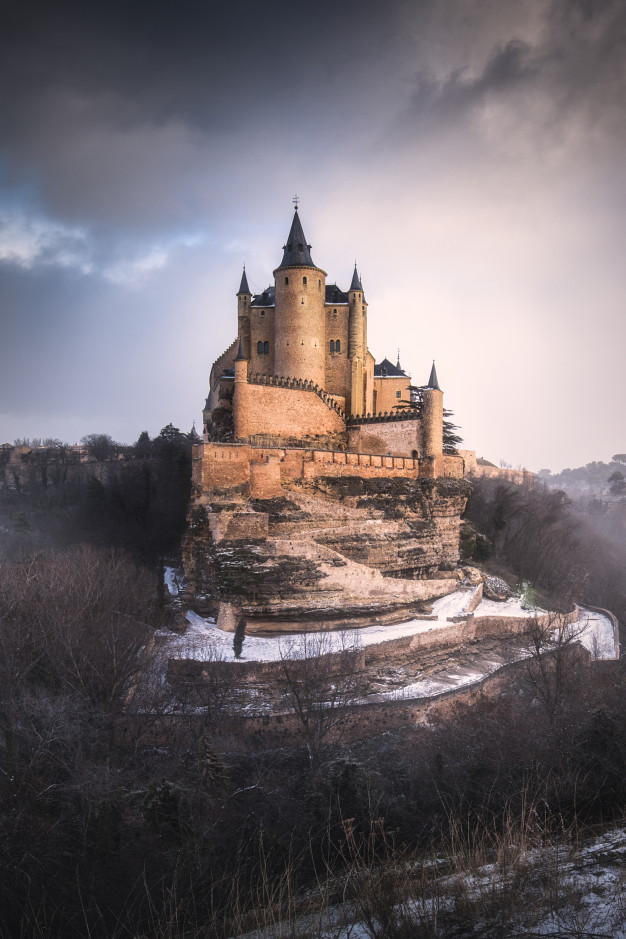
Coming in at 10: The Alcazar of Segovia, built and added to over the course of several hundred years. It began as a Roman fort, naturally, and then was occupied and expanded by Muslim invaders in the 700s. Finally, it achieved its current look (roughly) around 1258. It’s famous because of how it was built onto a rocky outcropping, and its resemblance to the prow of a mighty ship. It’s also unusual as it deviates a little from typical Spanish design, thanks to King Philip II, who added the wonderful, tapering spires on the tops of the turrets, hoping it would look more like other central European castles. And it does. At first glance, the light stone and blue towers suggest this is a French castle. But the Moorish influences can still be seen in the ornate crenelations along the walls.
That’s all very technical though, which is to say, not the main reason we like castles. We don’t find them fascinating for their crenelations, but for the impressions of awe they inspire in us. There’s something irresistibly majestic in the proud bastions of the Alcazar, jutting up defiantly from its formidable, rocky ramparts. It’s easy to imagine a knight of old feel a stirring in his armor-plated chest as he gazed up at the warm, yellow stones, glowing under the last rays of a Spanish sunset.
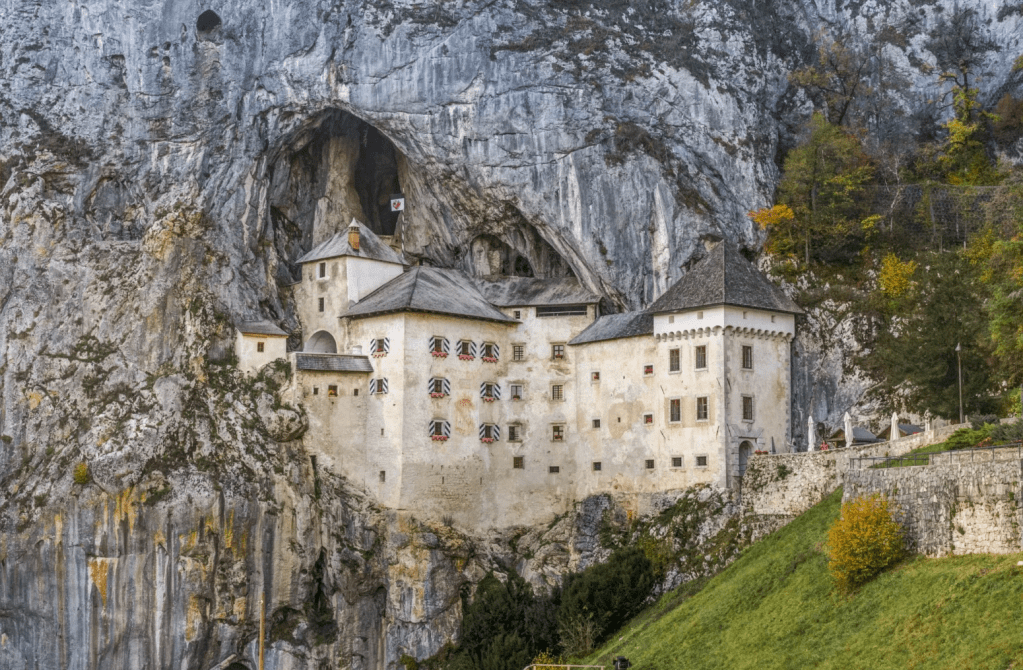
At number 9, we have Predjama Castle! Isn’t that awesome?? Come on, how cool is it to have a castle built into a freaking cave? If the idea of a castle is to be a place that’s well fortified and easy to defend, then it doesn’t get much better than building one inside an actual cave. At least, that’s what the Patriarch of Aquileia was thinking when he started building the castle back in 1274.
It was obviously added to and evolved over the years, and after being destroyed during a siege by the Hapsburgs (you don’t want to mess with them), rebuilt, and then destroyed again by an earthquake, the current castle was constructed in 1570 and hasn’t changed much at all since then.
Admittedly, it’s not a very pretty castle. It does remind me a bit of the Tibetan Phugtal Monastery in northern India, though. But that’s not why I like it. There’s something wonderfully imposing in its hard, uncompromising lines. It’s all business, and I love that, and the fact that it’s also built right into a cave makes it even better! It’s tough to find shots of the interior, but there are a few good videos on YouTube. To be honest, it looks pretty rough inside–this is nothing like the Alcazar above. No opulent throne rooms or lavish halls for dancing or entertaining guests. It also looks like it’d be really cold.
But it got the job done–it even has a secret passageway built into the cave for a quick escape! All in all it’s damned impressive, and I love it.
I think that’s enough for today, this is already quite a long post, and we’ve barely gotten started. Tune in next time for the thrilling continuation of Castles That I Like, And Why.

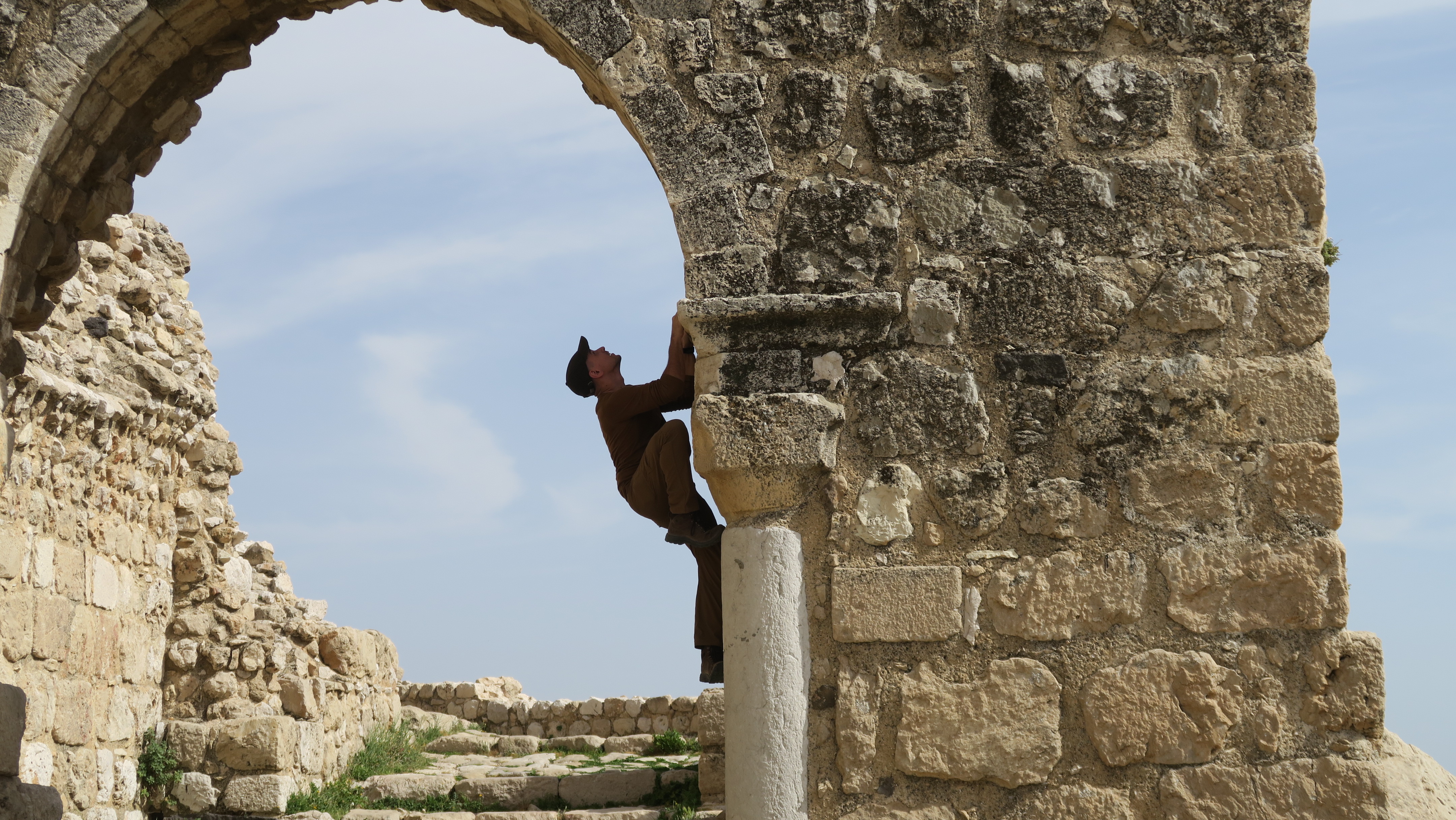
I love magic and castles. Keep it coming! X
>
LikeLike
Sarah! Wonderful to hear from you, thanks for stopping by! I imagine you’ve seen quite a few marvelous castles yourself in your vagabond sojournings across the wilds of Europe.
LikeLike
Hey Pearson!,
I really was fascinated with your “intro to your hobbies/personal interests”!!!
You’re a great writer to top it off which also is displayed by the work you do with OAN!!! I LOOVVVEEEE the way you drill down on exposing the evil that tries to mimic as “good” found throughout our culture! Your in-depth reporting with OAN contributes to the polish that they are gleaming to the viewership!
You’re gifted in taking complex details and issues, in explaining things that make it easy to follow & grasp completely!!!
Any way, I’m grateful to see this side of who you are as a unique voyager of what’s out there to explore & share your discoveries with the rest of us!!!
I see that you wrote a SciFi novel that I’ll look forward to reading (I LOOVVVEEEE SciFi since I was a kid)!
Once again, I wholeheartedly endorse what you’re saying & sharing in the many facets that make who you are!!!
God Bless You Pearson….
Your OAN Fan & Twitter Follower,
Eric (Near Denver & Bailey, Colorado)
(You need to join GAB.com , you’d find a very receptive audience there as well ~ my “handle” there is “EricLedByFaith” ~ you’ll love the format too, lots of forward thinking innovations embedded in the structure & format with GAB.com ~ hope to see you there!!!)
LikeLike
Wow, thanks Eric! Really appreciate the support, that’s very kind of you to say. I wish I didn’t need to report on all the ugly things happening, and could just focus on sharing the amazing beauty of our world and of our cultures and history. Things look grim now, but I still hope someday that might happen. There’s so much potential for good out there, it’s tragic to see it wasted on pettiness and greed. Thanks again for the encouragement Eric, your comment means a lot.
LikeLike
Enjoy your hobbies and time off and ignore the fools!
LikeLike
well thanks so much! I think I’ll do just that 😉
LikeLike
Thanks, Pearson. You are authentic and truthful. A terrific writer and truth speaker. I enjoyed your castle hobby. Thank you for sharing. It is so good to take a break, learn from others of our diverse good world.
LikeLike
Hey Linda! Thank you very much! You’re right, it is good to take a break, we’re inundated with negativity in the news. If you don’t take a step back sometimes, it can really be overwhelming. Thank you again for the support, and your very kind words. Our world is marvelously diverse, I wish we could all appreciate that more.
LikeLike
Pearson, I doubt if you remember me, just as I’m not sure of how you got me interested in , I believe, beautiful Irish tune.
I don’t know how your blog (?) popped up on my screen, but I recalled knowing you for a while. Were you in Rotary?
I just now remembered – you were working briefly at the La Valencia Hotel where I regularly played the piano for my special 100 year-old South African friend.
Nice work you’re doing.
http://www.edsiegelmd.com
Ed Siegel, MD
LikeLike
Hey Ed! Yep, feels like a million years ago. Do you still go there and play piano? I haven’t been since around that time, 8 or 9 years now…
LikeLike